Visual Arts is an often unsung specialty. Given the school’s population and the preferences of most consumers it is unsurprising that the performing arts are the focus of our school while non-performance specialities often get less attention. Many people do not find visual arts, math and science, or creative writing as accessible as the performing arts. They have an easier time extrapolating personal meaning, enjoyment, or understanding from a play, dance, or song because they work with physical movement and a display, while a sculpture, painting, lab report, or poem exists more internally than externally and does not offer a showcase of the process to make such things.
But for those who struggle to engage with modes visual arts because they are “static”, the faculty showcase that was recently in the Vulcan Materials Gallery would spark your interest with ease. Many of the “still sculptures” incorporated familiar items and materials such as mirrors, gears, and cubby shelves, playing into everyday life to make them more lively and human than the bust people likely think of when they hear “sculpture”. The room was filled with nature sounds, the chirping of birds and the rustling of leaves as a component of one immersive piece, immediately setting the tone of the exhibit and bringing in that tangible aspect many people miss with visual arts. Several sculptures were fully 3D, positioned in the open space of the exhibit, one of them spinning slowly in a mobile-like fashion. There were displays of tablets playing videos of dancers performing in trees and even a jar of water that had moss and other aquatic plants living inside.
I was given the opportunity to speak with Anne Herbert, a member of the Visual Arts faculty and curator of the Vulcan Materials Gallery, about the exhibit. I prompted her with the questions “Was there any theme for the exhibit, and if so: what was it? What was the core idea of the art that was selected or what do feel like it represents? Do you think these pieces harmonize or clash with each other and why?” Her response was:
“There is not a specific theme for the faculty show, but there is an intention. As working artists, we all have art practices that we nurture and engage with outside of ASFA. Sharing these demonstrates our investment in the field, and in the ideas and practices we ask our students to absorb within their own work. When a faculty exhibition is scheduled, we bring our respective works together and begin to edit for clarity and cohesion . . . this time there were formal commonalities such as circles that were present within all our works, though for different reasons, as well as shared colors and gestures. Though not planned, these create connections and conversations between pieces. And naturally there is also difference, and that contrast creates a dialogue. In the artist talks we all spoke about working through ideas, failure, perseverance, and the ways we learn to trust, listen to, and follow the process. Overall, I think the show worked as a whole, it was diverse and active and served as a good example to the students.”
She also graciously provided individual artist statements from herself and the other faculty.
Randy Gatchet Artist Statement
“I’m interested in the constant and redemptive nature of change as opposed to change as loss. . . reimagining waste material into sculptural form becomes a small act of remediation. My recent sculptures and installations rely on geometric structures and abstract organic forms to frame my re-examination of reclaimed materials I collect. The polyhedral forms of Platonic and Archimedean solids evoke structures found in microscopic toxins, viruses, carbon allotropes, sacred geometry, futuristic architecture, and celestial objects. They imply a continuum between molecular and interstellar space.”
Anne Herbert Artist Statement
“The painting process, for me, is an act of searching and experimentation, and of loss and discovery. Paying close attention to the unique occurrences, I work in a reactive way that allows the paintings to develop intuitively and individually. Through the physical engagement of painting, I locate myself, and it is humbling to encounter one’s own gestures. These gestures, sustained over years, ground me within the cycles of my life and make visible my connection and participation in the recurrent experience of being.”
Darius Hill Artist Statement
“I am obsessed with using the visual language of circles and chevron-like shapes. I've begun to see them as symbols for the circular churning, grinding aspects of the Black condition in America. The circle stands as the vicious, repeating cycle that Blacks often find themselves in, due to a unique history of systemic racism that, by design, kept us on lower socioeconomic rungs. The chevron-like shape creates a directional flow; suggesting wayfinding clues for individual or familial journeys, as well as larger cultural movements, past, present, and future.”
Celeste Pfau Artist Statement
“Celeste Pfau’s Embodied Forest: Human-Tree Ecology is an immersive art installation that invites viewers into a liminal space—a threshold between our definitions of human and nature. This space encourages reflection on the interconnectedness of humans and trees in the southeastern United States, with a focus on Alabama. Where is this elusive membrane that connects nature and humanity? Through ephemeral sculpture, found materials, and immersive video projections, the installation explores the diverse stories, movements, and environmental narratives of the region. By collaborating with movement artists and community members, Pfau creates intuitive spaces that cultivate curiosity, mutual learning, slow observation, and spontaneous creative dialogue. Dialogue / Creative conversation is the force of transformation. The installation is designed to be dynamic and evolving, with elements changing throughout the exhibition to reflect Pfau's studio practice. This iterative approach offers viewers a continually shifting experience, inviting them to engage with the artwork on multiple levels.”
In every way imaginable, this exhibit broke the bounds of how art is usually perceived, extending a bridge to those who usually claim to not understand or enjoy visual art. Sadly, this exhibit is no longer up and this opportunity to cross the bridge of transcending the page has passed, but I encourage you to be more open to visual arts in the future and keep your eyes out for the next exhibits the visual arts department will put in the gallery.

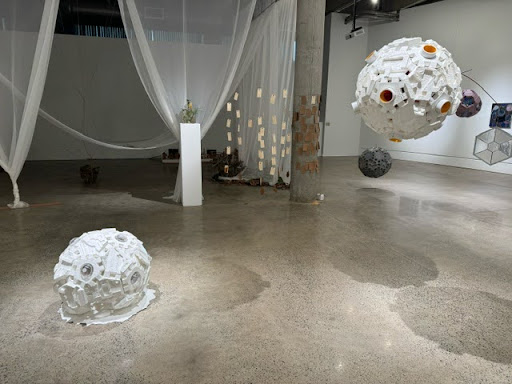

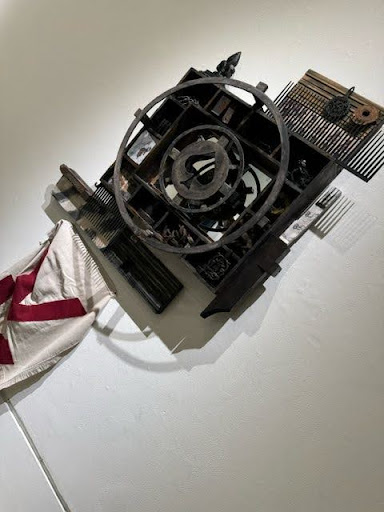

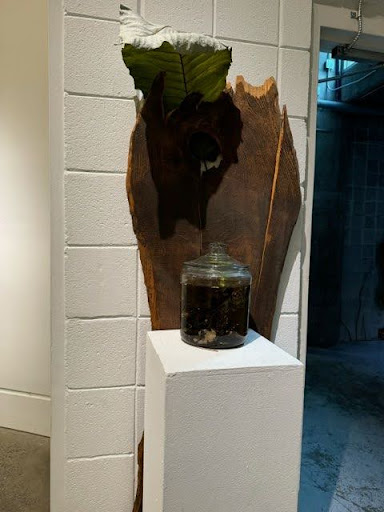

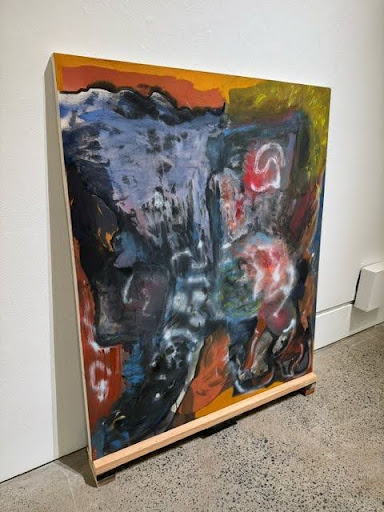

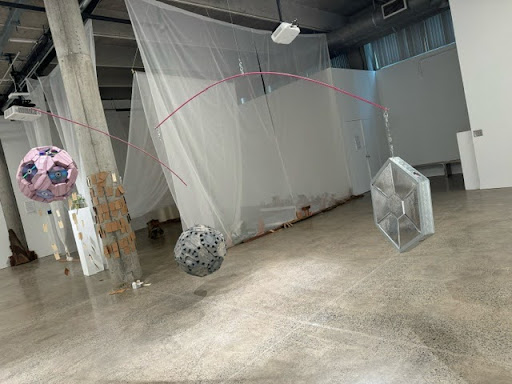
header.all-comments